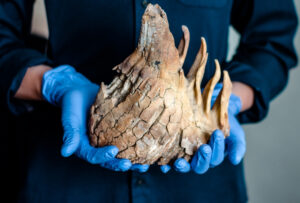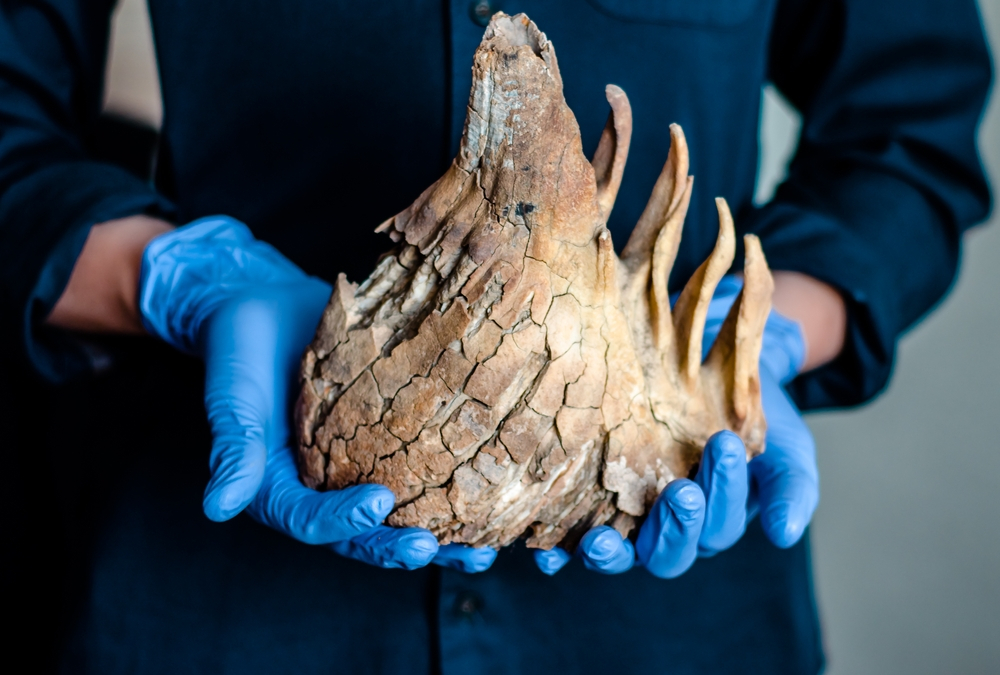
In a monumental breakthrough, Danish scientists have revealed the discovery of the oldest DNA ever recovered, dating back approximately 2.4 million years. This groundbreaking revelation, published in Nature on December 7, surpasses the age of the previously oldest DNA found in a Siberian mammoth bone. The recovery of ancient DNA fragments from an ice sheet in northern Greenland not only opens a window into the distant past but also challenges existing paradigms about prehistoric ecosystems.
Preservation Marvel: Unlocking Ancient DNA through Advanced Techniques
The exceptional preservation of this ancient DNA is credited to the unique soil composition at the site and the drastic ice-age temperatures that prevailed around 2.5 million years ago. The scientific community lauds this achievement as a “tour de force,” emphasizing its significance in pushing the boundaries of genetic exploration into the depths of time. The key to this breakthrough lies in the implementation of revised extraction protocols, enabling the extraction of DNA from the sediment’s quartz and clay layers.
Insights from the Past: A 2.4 Million-Year-Old Ecosystem Revealed
The ancient DNA fragments, recovered from the permafrost, offer a captivating snapshot of an ancient wooded ecosystem. This ecosystem, as reconstructed through artistic interpretation based on the ancient DNA, paints a vivid picture of mammoths coexisting with modern species such as arctic hares. Classified as environmental DNA (eDNA), these fragments encompass genetic material from more than 135 different species, providing a rich tapestry of the ancient biodiversity.
Surprising Revelations: Modern and Extinct Species Coexisting
The comprehensive environmental DNA (eDNA) analysis conducted on the recovered fragments has yielded a trove of unexpected findings, injecting a sense of awe and wonder into the realm of historical ecology. The revelations challenge established notions and stretch the boundaries of our understanding of the ancient environment preserved in the permafrost of Greenland. The presence of modern species, once thought to be absent from this region, adds a layer of complexity to the historical narrative.
In a surprising twist, the eDNA analysis detected genetic traces of poplar and birch trees, species that are not currently found in the northern reaches of Greenland. This discovery prompts a reevaluation of past climatic conditions and ecological dynamics, suggesting a potentially different landscape compared to what exists today. The unearthing of these botanical remnants in the ancient DNA fragments underscores the transformative power of genetic exploration, offering a glimpse into a world that challenges our preconceived notions of historical ecosystems.
Equally astonishing is the presence of horseshoe crabs in the ancient genetic material. Horseshoe crabs are creatures associated with temperate and subtropical regions, and their appearance in the genetic record of an Arctic ecosystem raises intriguing questions about past environmental conditions and migration patterns. This unexpected finding adds a layer of complexity to the understanding of the historical biogeography of these marine organisms, suggesting a more dynamic and adaptable ecological history.
However, the most remarkable revelation from the eDNA analysis is the discovery of genetic material from an undocumented branch of mastodons. This finding upends prior assumptions about the distribution and chronology of these ancient giants. Previously, the closest mastodon DNA to the Greenland site was identified much further south in Canada and was notably younger, dating back only 75,000 years. The presence of a distinct mastodon lineage in Greenland, dating back 2.4 million years, challenges conventional theories about mastodon migration patterns and introduces a new dimension to our understanding of their evolutionary history.
In conclusion, the unexpected findings from the eDNA analysis add layers of complexity and intrigue to the unfolding narrative of Greenland’s ancient ecosystem. The genetic remnants of poplar and birch trees, the presence of horseshoe crabs in the Arctic, and the revelation of an undocumented branch of mastodons collectively paint a picture of a prehistoric world that defies our conventional understanding. As we delve deeper into the ancient DNA, each revelation sparks new questions and beckons us to reconsider the intricate interplay of life across geological epochs.
Molecular Biology’s Evolution: A Glimpse into Future Paleontology
Beyond the immediate implications for paleontology, this discovery marks a significant milestone in the evolution of molecular biology’s role in scientific exploration. Eske Willerslev, the lead paleogeneticist at the University of Cambridge, envisions a future where ancient DNA and environmental DNA unlock unprecedented insights into the mysteries of our planet’s history. This breakthrough underscores the immense potential of molecular biology in reshaping our comprehension of prehistoric life, opening up new frontiers for exploration and discovery.
In conclusion, the recovery of 2.4 million-year-old DNA fragments not only adds a new chapter to our understanding of ancient ecosystems but also propels us into an exciting era where molecular biology becomes a primary tool for unraveling the mysteries of our planet’s distant past.

Conclusion: Unlocking the Mysteries of Deep Time Through Ancient DNA
The discovery of 2.4 million-year-old DNA fragments from an ice sheet in northern Greenland stands as an extraordinary feat, ushering us into a realm where the mysteries of deep time are unraveled through the lens of molecular biology. Published in Nature on December 7, this groundbreaking research not only extends the age record for recovered DNA but also challenges and expands our understanding of prehistoric ecosystems.
The exceptional preservation of ancient DNA, credited to the unique conditions of the site and advanced extraction protocols, reveals a prehistoric world teeming with diverse life forms. The artistic reconstruction based on this ancient genetic material showcases a wooded ecosystem where mammoths roamed alongside contemporary species like arctic hares, providing a captivating glimpse into Earth’s ancient biodiversity.
The revelations from the eDNA analysis, encompassing over 135 different species, bring forth unexpected findings. The presence of modern species such as poplar and birch trees, as well as horseshoe crabs, challenges conventional notions of historical ecology. Moreover, the discovery of an undocumented branch of mastodons, with DNA dating back 2.4 million years in Greenland, reshapes our understanding of the geographical and temporal distribution of these ancient giants.
This scientific milestone not only marks a triumph in genetic exploration but also propels molecular biology into the forefront of paleontological research. The potential envisioned by lead paleogeneticist Eske Willerslev foresees a future where ancient DNA and environmental DNA unlock unprecedented insights into Earth’s ancient history. The implications extend beyond the immediate discoveries, paving the way for a new era where molecular biology labs become crucibles for understanding and reconstructing the mysteries of deep time.
In essence, the recovery of 2.4 million-year-old DNA fragments transcends scientific boundaries, offering a profound connection to our planet’s ancient past. As we delve into this genetic treasure trove, we embark on a journey of exploration and discovery, where each DNA fragment becomes a portal to understanding the intricate tapestry of life that has woven itself through the epochs of Earth’s history.
